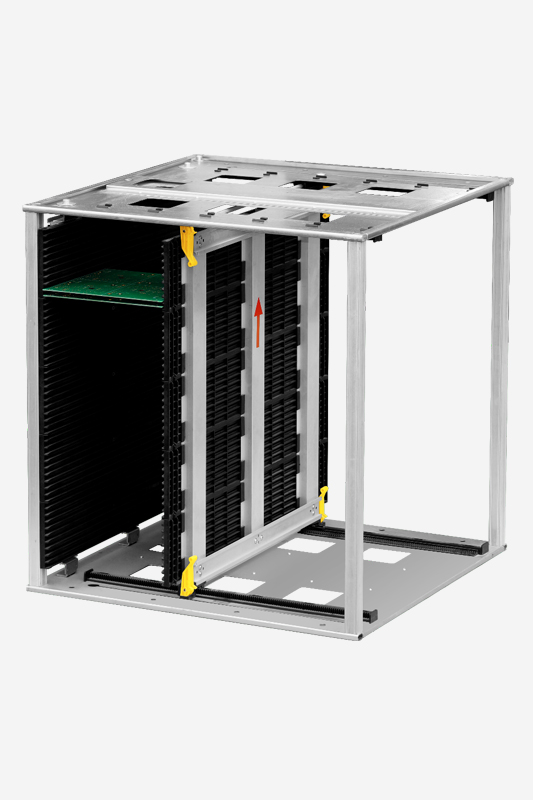The limit of the sensitivity of electronics to electrostatic discharge is pushed annually to more vulnerable areas. The problem lies particularly in the constantly increasing level of integration of components and their complexity. Protection against electrostatic discharge is a must, but in the wide range of solutions available, the problem is to choose those that are effective for specific hazards.
The largest group of threats is caused by people. At the workstation, employees are almost always responsible for the accumulation of charges and the formation of electrostatic discharges. Most often the operator is not aware of his actions.
The values of potential electricity while performing activities at the workstation range from several hundred volts to even several tens of kilowatts, e.g. rising from a chair changes human potential by 1.5kV.
Discharges can therefore damage components and systems at the stage of their production, testing or servicing. The damage may appear only after a longer period of time or when adverse conditions occur. Electrostatic discharges can also cause damage to equipment or errors in programmable systems. Earthing is a necessary and always required method of protection against electrostatic discharges. ccording to international research, about 70% of damage to electronic components is caused by incorrect personnel protection. Workstations must therefore be adequately secured.
IMPORTANCE OF THE EPA ZONE
In production companies (especially in halls), laboratories, but also in electronic services, there should be a separate EPA (Electrostatic Protected Area). The zones are created in order to eliminate electrostatic discharges completely. In EPAs, the electrostatic field discharge limit is 100 V/cm. An EPA zone may occupy a separate part of the room or the entire work area, which should be considered a current trend. EPA zones are marked with appropriate signs.

The first preparatory actions to build the EPA zone are to eliminate objects causing damage to sensitive elements and to ensure proper surface cleanliness with the use of specialized chemicals, as standard cleaning agents leave an insulating layer. Grounding is a necessary and always required method of protection against electrostatic discharges. An earthing device, for example, can be an antistatic wristband. With this simple solution, the human being is connected to earth and the antistatic table mat esd (Earth Bonding Point) and thus the sensitive elements on the mat are earthed and no charge is generated in the human body. However, it is a common mistake to believe that sufficient protection is only achieved by using a hand band.
Meanwhile, all international standards, including EN 61340-5-1, underline the need to use special clothing directly at the workplace and in every EPA zone. The required protection element is therefore special antistatic clothing with conductive fibers, which form a Faraday cage, providing protection against electrostatic discharges by damping static electric fields. Antistatic jackets, jumpers, T-shirts, trousers, overalls – the choice of clothing is very wide. When working with particularly sensitive systems, antistatic gloves with conductive fibres should also be considered. The outfit should be complemented by antistatic shoes made of conductive material, which must remain in contact with the antistatic mat or conductive and earthed floor to ensure full protection.
Since low air humidity favours the accumulation of electrostatic charges, it is also important to ensure relative air humidity (above 30%).
For this purpose, ionizing devices are used that discharge charges from insulated elements. Also the choice of ionizers is huge, e.g. pistol, table ionizers. Ionizers are particularly useful in places where it is difficult to ground materials, e.g. on production lines.
IMPORTANT DETAILS
Use containers, trays, bags and foams to transport and store components to prevent differences in potential. Of course, the furniture that forms the basis of the workstation must also be made of antistatic materials. Floors, walls, antistatic esd furniture, workstation surfaces must be washed with anti-electrostatic fluids. The cleanliness of the rooms and work area is required to ensure proper protection against static electricity. Tools to assess the functioning of protective measures are also required for inspection. Resistance meters cooperating with appropriate electrodes are absolutely necessary.
Measurements must be made under the conditions and in the manner described in the standards. The organisation of EPA zones and the necessary purchases of safeguards are only part of the comprehensive antistatic protection. Appropriate training measures and organisational structure are equally important.
Anti-static protection requirements and clear rules for compliance must be communicated to employees. Staff must be made aware of the ESD issues resulting from the training courses completed with the tests. All ESD protection and EPA coherence should be overseen by the ESD coordinator, who is responsible and ensures that the rules of the protection system are respected. Losses caused by the ESD effect for the electronics manufacturer/service technician can be extremely costly and at the same time difficult to locate and detect.
Investing in comprehensive, well-thought-out protection is therefore one of the basic tasks facing decision-makers in most electronics companies. Please contact Renex for more information.

